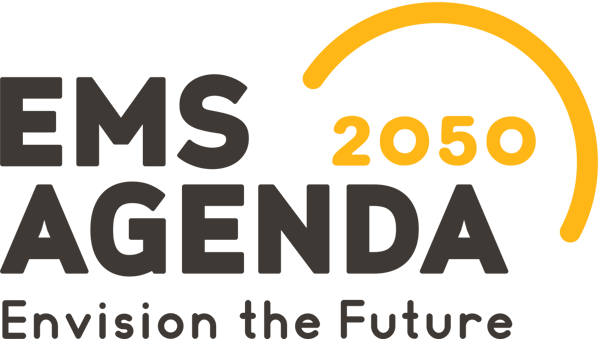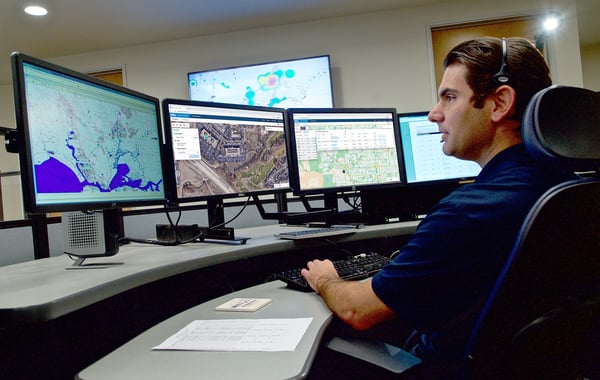Meet the New ZOLL Dispatch and ZOLL Respond CAD Solution
EMS Agenda 2050: Leading Us into an Evidence-Based, Data Driven Future
Creating the Future
Was this information valuable?

Creating the Future
Technology has seemingly unlimited power. As newer devices, faster networks, and more reliable data become available, we see hundreds of new opportunities for EMS to take advantage of them. But we also recognize the obstacles EMS agencies face when it comes to adopting new technologies.
This was just one of many critical topics that is addressed by EMS Agenda 2050, a vision for the future of EMS. While people are at the center of this vision, technology and data play a huge role in making it easier for EMS clinicians to do their jobs and focus on what matters most: the patient.

When the Agenda was being created, we asked EMS professionals, leaders, and experts in healthcare and public safety what the ideal EMS system of the future would look like.
One common theme that kept popping up was a people-centered EMS system—one that cared for the individual, prioritized the safety of the community and the workforce, was fair and equitable, and took advantage of the vast amounts of data and technology to improve care.
The vision is grounded in six guiding principles. You can read the entire Agenda and find other resources, including a video, at ems.gov. Here are just some highlights.
Inherently Safe & Effective
In 2050, the entire EMS system, from how care is accessed to how it is delivered, is designed to be inherently safe and to minimize exposure of people to injury, infections, illness or stress. Clinical care, operations and other aspects of the system are based on the best evidence in order to deliver the most effective service, with a focus on outcomes determined not only by the EMS service but by the entire community and the individuals receiving care.
- Integrated technology provides real-time situational awareness and decision support.
- EMS systems prioritize technology, equipment and policies that use proven methods to limit the safety risk to EMS clinicians and patients.
- EMS data systems securely protect patient information and privacy.
Integrated & Seamless
Healthcare systems, including EMS, are fully integrated with each other and with the communities in which they operate, and collaborate frequently with their community partners. Communication and coordination between different parts of the care continuum are seamless, leaving people with a feeling that one system, comprising many integrated parts, is caring for them and their families.
- EMS professionals can access and contribute to a fully integrated, patient-centered medical record that is owned by the patient.
- EMS data informs decisions made not only in EMS, but also in other areas of the community and supports population health and preparedness.
- Medical communication centers, integrated with public safety answering points, serve as hubs for acute and non-acute unscheduled healthcare. They use evidence-based methods to triage potential patients and provide the appropriate resource or referral, including telemedicine care.

Reliable & Prepared
In 2050, patients receive reliable EMS care that is consistent, compassionate and guided by evidence—no matter when or where they need help or who the agency or individual EMS clinician is. EMS systems are prepared for anything by being scalable and able to respond to fluctuations in day-to-day demand, as well as major events, both planned and unplanned.
- EMS is always adequately staffed, educated, and prepared, nationwide.
- Leadership development, career growth, and higher education are prioritized within EMS to ensure industry viability.
- Real-time and historic data are used to predict or immediately respond to emergencies from cardiac arrest to mass casualty incidents.
Socially Equitable
Access to care and quality of care are not determined by age, socioeconomic status, gender, ethnicity, geography or other social determinants. Caregivers feel confident and prepared when caring for children, people who speak different languages, persons with disabilities or other populations that they may not interact with frequently.
- Using virtual technologies and telemedicine, rural communities have access to specialty care and resources, avoiding the need to transport patients long distances and separate them from their homes and families.
- EMS systems have access to equipment that allows them to safely and effectively care for patients of all ages. Equipment and medical devices are designed to easily adapt to patients of different sizes and ages without compromising patient safety.
- Technology has eliminated the impact of language barriers on EMS care.

Sustainable & Efficient
EMS systems across the country have the resources they require to provide care in a fiscally responsible, sustainable framework that appropriately compensates clinicians. Efficient EMS systems provide value to the community, minimize waste and operate with transparency and accountability.
- Regional Medical Communication Systems, in collaboration with emergency communication centers, triage, assess and allocate resources based on patient need and preference.
- System design, equipment needs, and treatment protocols focus on improving patient outcomes for the lowest cost.
Adaptable & Innovative
EMS systems quickly and effectively meet the evolving needs of the population by continuously and methodically evaluating new technologies, system designs, educational programs and other aspects of the system. Innovative individuals and organizations are encouraged to test new ideas in a safe and systematic way and implement effective new programs.
- EMS education provides a foundation of medical, operational and professional knowledge that develops higher order thinking and the ability to incorporate new evidence, science and capabilities into one’s practice.
- Organizations engage in rapid and safe innovation cycles and share findings to encourage nationwide replication and improvement.
- Government and academic institutions, EMS organizations, local EMS services and other partners prioritize funding EMS research that promotes more effective and safer patient care.

Now, it’s your turn…
Hundreds of individuals throughout EMS and beyond, led by the dedicated EMS Agenda 2050 Technical Expert Panel, worked hard to create this inspiring vision for EMS—now, it’s your turn to take the first steps in your communities. The future starts now, and it’s in your hands!
Related Posts
Collect More Revenue Faster: The Pivotal Role of Clear, Concise, and Complete Documentation
ZOLL Pulse Blog
Subscribe to our blog and receive quality content that makes your job as an EMS & fire, hospital, or AR professional easier.
ZOLL Pulse Blog
Subscribe to our blog and receive quality content that makes your job as an EMS, fire, hospital, or AR professional easier.




